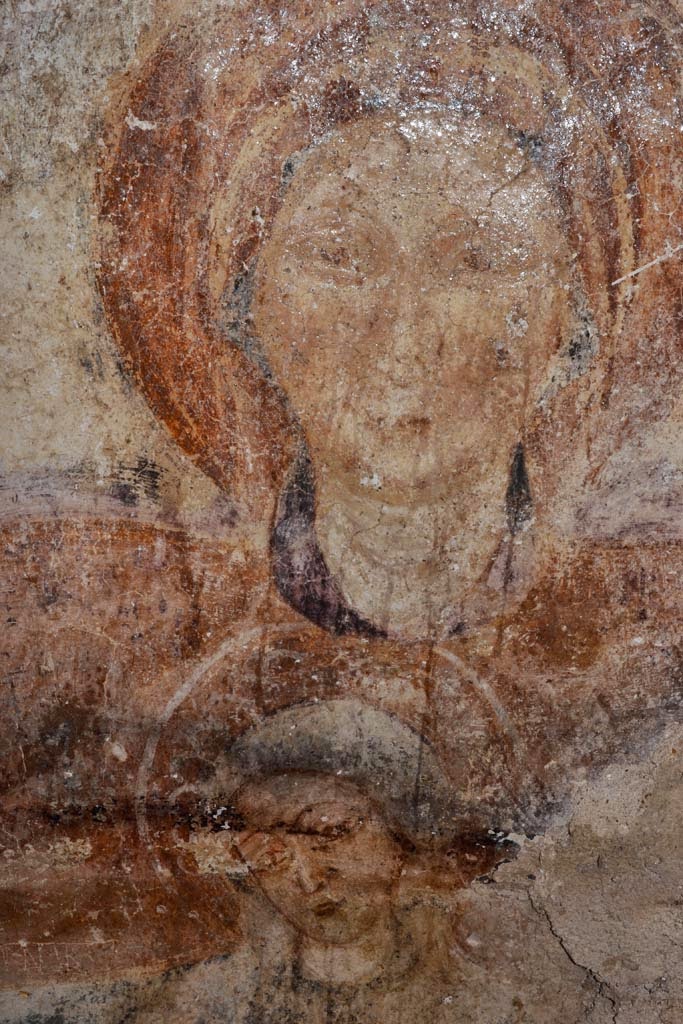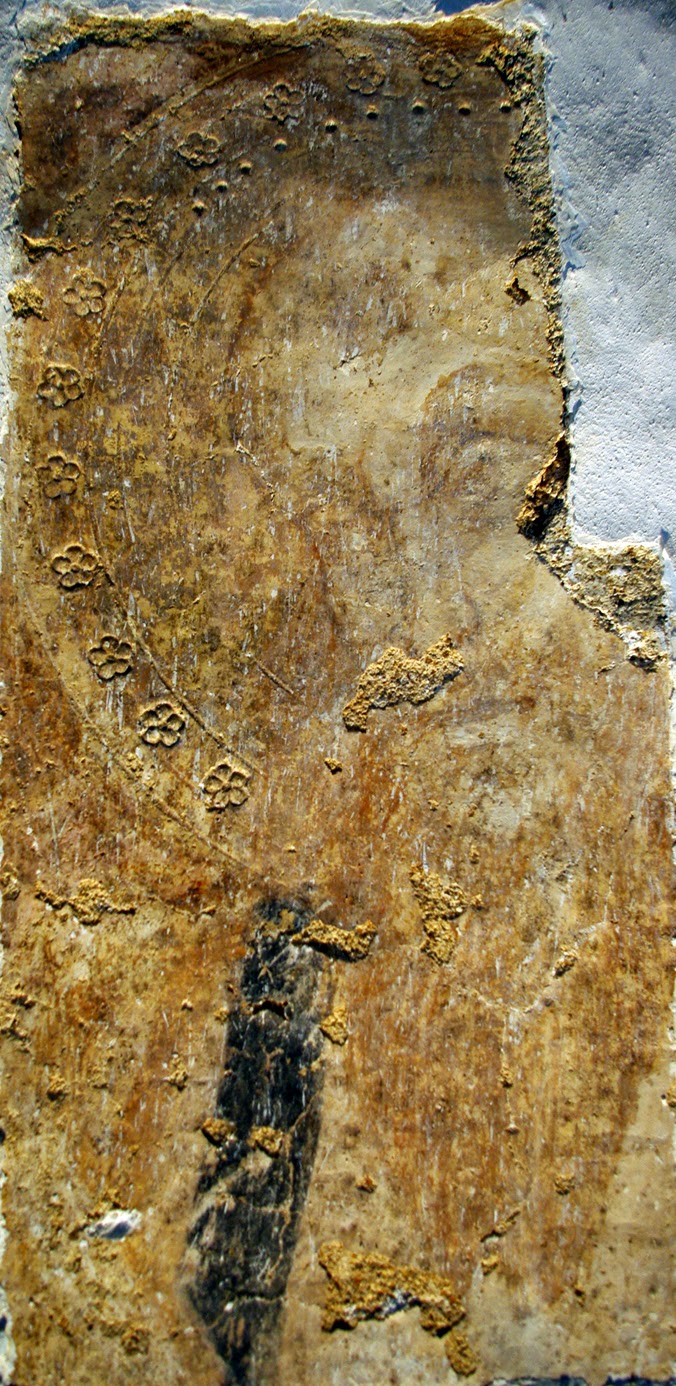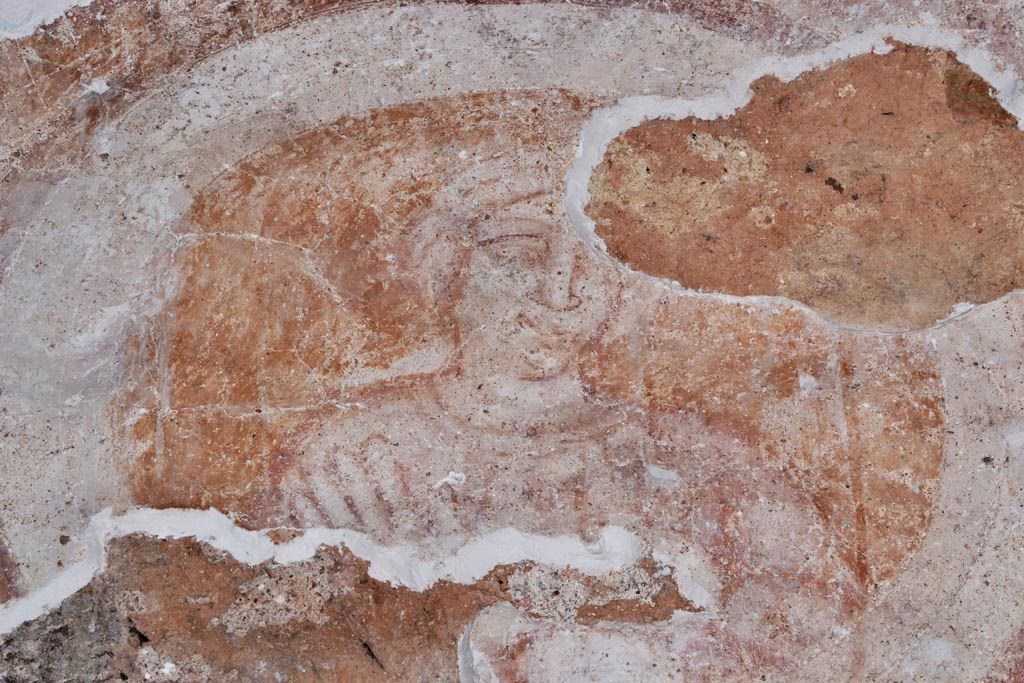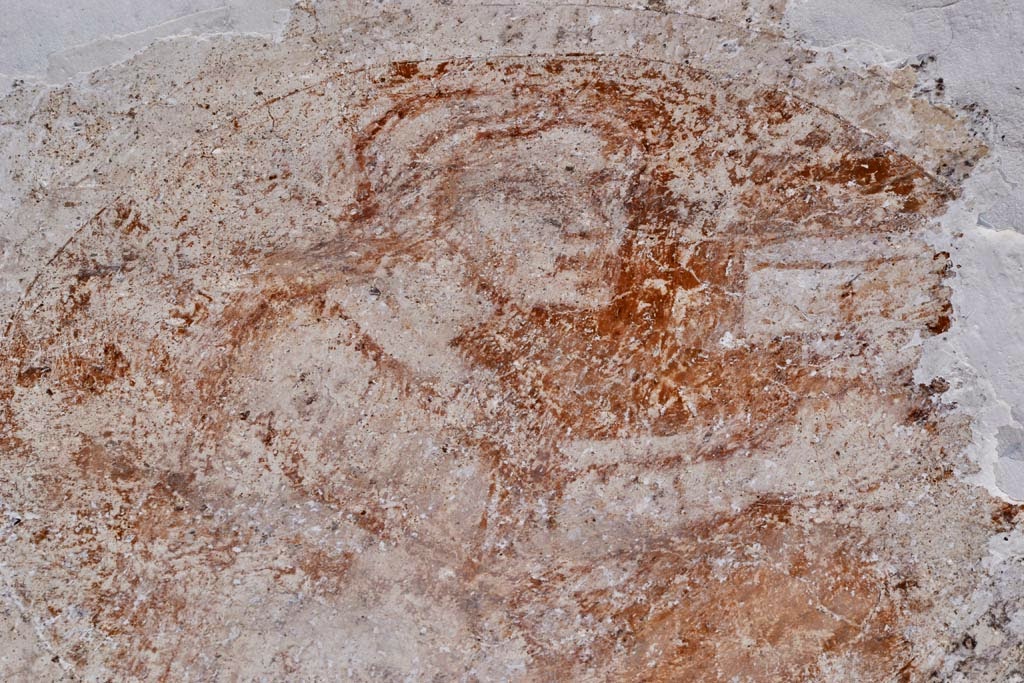Medieval History
The village of Kövi (Kame?any, SK) lies in the vicinity of Rimaszombat (Rimavská Sobota) and Rozsnyó (Ro??ava), just north of the modern border between Hungary and Slovakia. In the middle ages, the settlement had an important castle, the ruins of which can still be seen above the settlement of Gömörrákos (Ráko?). The castle was built by members of the Ákos clan in the late 13th century, and it was later owned by descendents of the family, the Bebek and Csetneki families. In 1367, it was described as a ruin, but was rebuilt by about 1400, when the Bebek family alone obtained possession of it.
- Restoration Of The Wall Paintings Of Torna / Tur?a Nad Bodvou
Detail from the Arrest of Christ (cleaned state, 2008)One of the largest restoration projects in Slovakia was completed in 2014: the restoration of the wall paintings in the sanctuary of the medieval church of Torna (Tur?a nad Bodvou). The frescoes, found...
- Late 14th Century Frescoes Discovered At Nitra Cathedral
The cathedral of Nyitra (Nitra, Slovakia) is one of the oldest, most complex, and - until quite recently - least known cathedral building of medieval Hungary. Located north-east of Pozsony/Pressburg/Bratislava, the bishopric of Nyitra was founded before...
- Medieval Wall Paintings Discovered At Magyarlóna
Cover of the book on Magyarlóna The village of Magyarlóna (formerly known as Szászlóna, now Luna de Sus, Romania) is a characteristic village of the Kalotaszeg region of Transylvania, near Kolozsvár (Cluj). The village was first mentioned...
- First Publications On The Murals Of The Parish Church Of Pest
The 14th century fresco of the Virgin of Child, discovered last year in the sanctuary of the Inner City Parish Church of Pest (in downtown Budapest) created quite a stir. I suppose it always creates some stir when a a fresco appears older than the wall...
- Virtual Visits To Transylvanian Medieval Churches
Gelence (Ghelinta) A new website provides a number of very-well done virtual visits (360° panoramas) to Transylvanian sites. The site, called Treasures of Szeklerland introduces monuments and sites from the eastern part of Transylvania, the territory...
Medieval History
Medieval Wall Paintings uncovered at Kövi/Kame?any
 |
| Saint Anne with the Virgin at Kövi |
The parish church of Kövi dates also from the late 13th or only 14th century, and it has been known for some time that its walls preserve important medieval wall paintings. Parts of them were uncovered in 1977, but this work stopped soon afterwards. During the last few years, starting from 2011, the uncovery of these frescoes began again, and research so far has already yielded very important results. The frescoes have been uncovered on the walls of the semi-circular apse of the church, particularly on the northern wall. Here a series of the apostles can be seen, while the insede wall of the triumphal arch is decorated with female martyrs. Higher on the arch, the Wise and Foolish Virgins can be seen. More recently, restorer Peter Kore? has uncovered additional frescoes on the north wall of the nave. Here an impressive composition the Virgin and Child with St. Anne (Mettercia) has been found, which shows the extended family of the Virgin. More frescoes are to be found in the attic of the church, above the Baroque vault built into the nave. Here details of a Last Judgement scene can be seen. Photos of the frescoes can be seen on the very useful Slovakian portal of medieval churches, Apsida.sk. However, a picture of the St. Anne can be seen first on this blog, along with other images uncovered in the nave (I thank the restorer for providing me with images).

The finds at Kövi are of great importance. Although the frescoes appear to be somewhat fragmentary, their high quality can be seen, especially in some of the faces. A full uncovery of the ensemble and a careful restoration of the frescoes would result in a spectacular monument. The locality is important, because it is in a church which is right next to the medieval castle, which was one of the administrative centers of the region. The patrons of the frescoes were most likely the lords of the castle, so members of the powerful Bebek family. In the present state of research, the frescoes can be dated to the late 14th century or to around 1400 - but it has to mentioned that the frescoes of the nave and sanctuary date from two different painting campaigns. Overall, they appear to be related not only to nearby Gömörrákos, but also to the frescoes of the somewhat more distant Torna/Tur?a nad Bodvou, a settlement near Kassa/Ko?ice, the frescoes of which have also been recently uncovered. The full restoration of the Kövi frescoes will definitely considerably alter our knowledge of medieval wall painting in the region. It has to be mentioned that the historical region of medieval Gömör County preserves the richest ensemble of medieval wall paintings from the territory of the medieval Kingdom of Hungary. Along with the countless impressive painted monuments in the region - places such as Csetnek/?títnik, Karaszkó/Kraskovo, Gecelfalva/Kocelovce, Gömörrákos/Ráko?, Ochtina/Ochtiná and others - research during recent years uncovered even more, such as the frescoes of sanctuary of Pels?c/Ple?ivec. The churches can be visited along the Gothic Route of churches. It is to be hoped that within a short time, Kövi will become an important stopping point on this route.
Here are a few pictures of the frescoes in the sanctuary, where the high quality of the apostle frescoes can be observed:




The finds at Kövi are of great importance. Although the frescoes appear to be somewhat fragmentary, their high quality can be seen, especially in some of the faces. A full uncovery of the ensemble and a careful restoration of the frescoes would result in a spectacular monument. The locality is important, because it is in a church which is right next to the medieval castle, which was one of the administrative centers of the region. The patrons of the frescoes were most likely the lords of the castle, so members of the powerful Bebek family. In the present state of research, the frescoes can be dated to the late 14th century or to around 1400 - but it has to mentioned that the frescoes of the nave and sanctuary date from two different painting campaigns. Overall, they appear to be related not only to nearby Gömörrákos, but also to the frescoes of the somewhat more distant Torna/Tur?a nad Bodvou, a settlement near Kassa/Ko?ice, the frescoes of which have also been recently uncovered. The full restoration of the Kövi frescoes will definitely considerably alter our knowledge of medieval wall painting in the region. It has to be mentioned that the historical region of medieval Gömör County preserves the richest ensemble of medieval wall paintings from the territory of the medieval Kingdom of Hungary. Along with the countless impressive painted monuments in the region - places such as Csetnek/?títnik, Karaszkó/Kraskovo, Gecelfalva/Kocelovce, Gömörrákos/Ráko?, Ochtina/Ochtiná and others - research during recent years uncovered even more, such as the frescoes of sanctuary of Pels?c/Ple?ivec. The churches can be visited along the Gothic Route of churches. It is to be hoped that within a short time, Kövi will become an important stopping point on this route.
Here are a few pictures of the frescoes in the sanctuary, where the high quality of the apostle frescoes can be observed:



- Restoration Of The Wall Paintings Of Torna / Tur?a Nad Bodvou
Detail from the Arrest of Christ (cleaned state, 2008)One of the largest restoration projects in Slovakia was completed in 2014: the restoration of the wall paintings in the sanctuary of the medieval church of Torna (Tur?a nad Bodvou). The frescoes, found...
- Late 14th Century Frescoes Discovered At Nitra Cathedral
The cathedral of Nyitra (Nitra, Slovakia) is one of the oldest, most complex, and - until quite recently - least known cathedral building of medieval Hungary. Located north-east of Pozsony/Pressburg/Bratislava, the bishopric of Nyitra was founded before...
- Medieval Wall Paintings Discovered At Magyarlóna
Cover of the book on Magyarlóna The village of Magyarlóna (formerly known as Szászlóna, now Luna de Sus, Romania) is a characteristic village of the Kalotaszeg region of Transylvania, near Kolozsvár (Cluj). The village was first mentioned...
- First Publications On The Murals Of The Parish Church Of Pest
The 14th century fresco of the Virgin of Child, discovered last year in the sanctuary of the Inner City Parish Church of Pest (in downtown Budapest) created quite a stir. I suppose it always creates some stir when a a fresco appears older than the wall...
- Virtual Visits To Transylvanian Medieval Churches
Gelence (Ghelinta) A new website provides a number of very-well done virtual visits (360° panoramas) to Transylvanian sites. The site, called Treasures of Szeklerland introduces monuments and sites from the eastern part of Transylvania, the territory...
